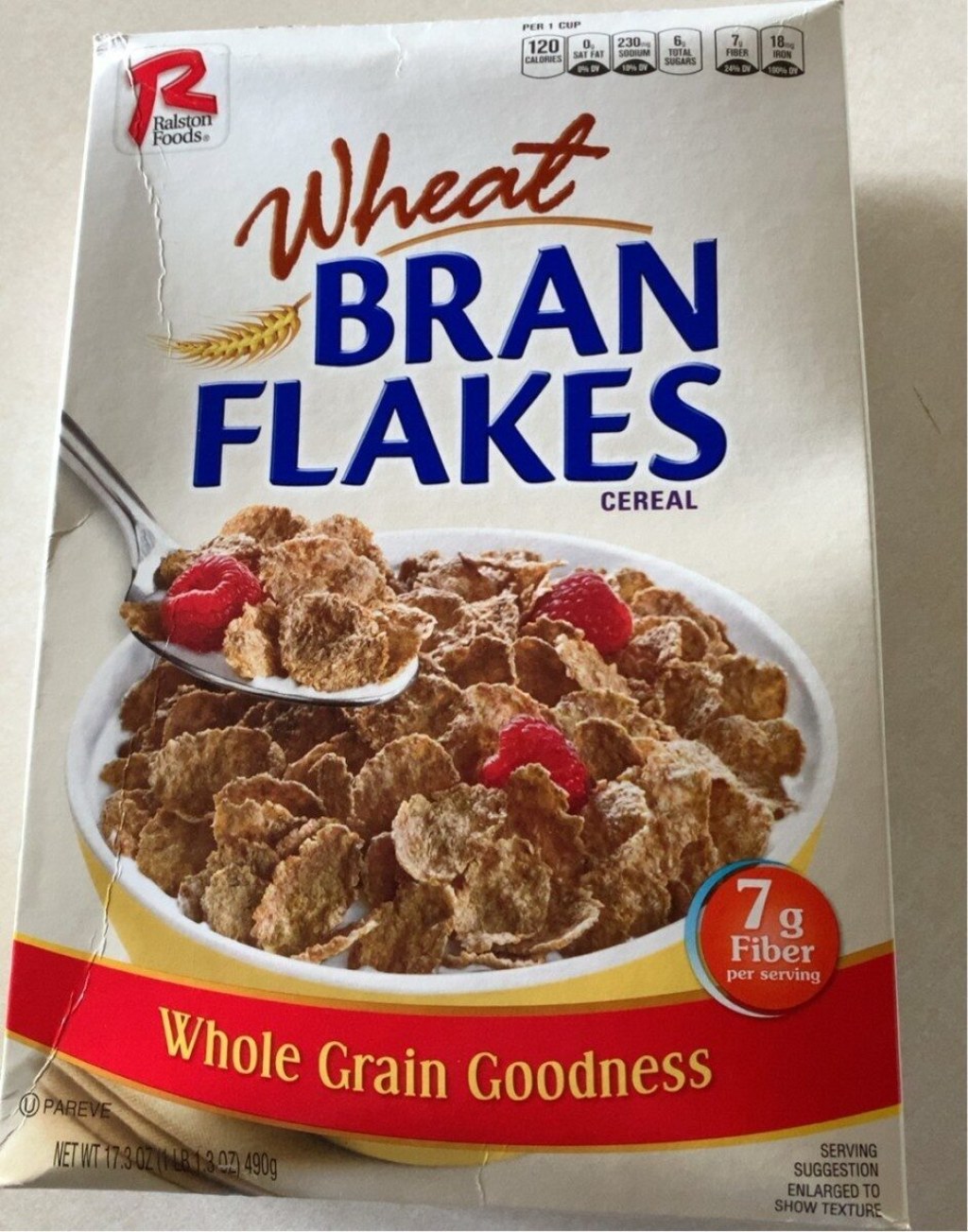Wake Up To Nutritious Wheat Flake Cereal – Start Your Day Right!
Wheat Flake Cereal: A Nutritious Breakfast Option for Cereal Connoisseurs
Greetings, Cereal Connoisseur! Are you looking for a healthy and delicious breakfast option? Look no further than wheat flake cereal. In this article, we will delve into the world of wheat flake cereal and explore its benefits, origins, production process, and more. So grab a bowl of your favorite cereal and let’s dive in!
Introduction
Breakfast is often referred to as the most important meal of the day, and for a good reason. Starting your day with a nutritious meal can provide you with the energy and nutrients needed to kickstart your day. Wheat flake cereal is a popular choice for many breakfast enthusiasts due to its numerous health benefits and versatility.
1 Picture Gallery: Wake Up To Nutritious Wheat Flake Cereal – Start Your Day Right!

Wheat flake cereal is made from whole wheat grains that have been flattened and toasted. It is rich in fiber, vitamins, and minerals, making it a wholesome and filling breakfast option. Additionally, it is low in fat and contains no cholesterol, making it suitable for those watching their weight or following a heart-healthy diet.
Now that we understand the basics of wheat flake cereal, let’s explore its origin and production process.
What is Wheat Flake Cereal?

Image Source: openfoodfacts.org
Wheat flake cereal is a breakfast cereal made from whole wheat grains that have been processed and flattened. The grains are cooked, dried, and then rolled into flakes. These flakes are then toasted to enhance their flavor and crunchiness. The end result is a nutritious cereal that can be enjoyed with milk, yogurt, or as a topping for smoothie bowls and desserts.
Who Invented Wheat Flake Cereal?
The invention of wheat flake cereal is credited to Dr. John Harvey Kellogg, a physician and health advocate. In the late 19th century, Dr. Kellogg was experimenting with different grains and cooking methods to create a nutritious and easy-to-digest breakfast option for his patients at the Battle Creek Sanitarium in Michigan, USA. His efforts led to the development of wheat flake cereal, which soon gained popularity and became a staple breakfast choice worldwide.
When Was Wheat Flake Cereal First Introduced?
Wheat flake cereal was first introduced in the late 1800s when Dr. John Harvey Kellogg began serving it to his patients at the Battle Creek Sanitarium. Its popularity grew rapidly, and by the early 1900s, wheat flake cereal was being produced and consumed on a larger scale. Today, it is a common sight on breakfast tables around the world.
Where is Wheat Flake Cereal Produced?
Wheat flake cereal is produced in various countries around the world, with the United States being one of the largest producers. Other major producers include Canada, Germany, and the United Kingdom. The production process involves sourcing high-quality wheat grains, processing them into flakes, and packaging them for distribution.
Why Should You Choose Wheat Flake Cereal?
There are several reasons why wheat flake cereal is a great choice for your breakfast. Firstly, it is a rich source of fiber, which aids in digestion and helps maintain a healthy weight. The high fiber content also keeps you feeling fuller for longer, reducing the chances of overeating later in the day.
Secondly, wheat flake cereal is packed with essential vitamins and minerals, including iron, magnesium, and B vitamins. These nutrients play a crucial role in maintaining overall health and wellbeing.
Thirdly, wheat flake cereal is incredibly versatile. You can enjoy it with cold or warm milk, add fresh fruits for extra flavor and nutrition, or use it as a crunchy topping for desserts and yogurt parfaits.
How is Wheat Flake Cereal Produced?
The production process of wheat flake cereal involves several steps. First, the whole wheat grains are thoroughly cleaned to remove any impurities. Then, they are cooked in water or steam to soften them. After cooking, the grains are dried to remove excess moisture. Once dried, the grains are rolled into flakes using specialized machinery. The flakes are then toasted to enhance their taste and texture. Finally, the toasted flakes are cooled and packaged for distribution.
Advantages and Disadvantages of Wheat Flake Cereal
Like any food product, wheat flake cereal has its advantages and disadvantages. Let’s take a closer look:
Advantages:
1. High in fiber: Wheat flake cereal is an excellent source of dietary fiber, promoting healthy digestion and preventing constipation.
2. Nutrient-rich: It is packed with essential vitamins and minerals, contributing to overall health and wellbeing.
3. Versatile: Wheat flake cereal can be enjoyed in various ways, providing a customizable breakfast experience.
4. Low in fat and cholesterol-free: It is a heart-healthy option for individuals looking to improve their cardiovascular health.
5. Sustained energy release: The complex carbohydrates in wheat flake cereal provide a steady source of energy throughout the morning.
Disadvantages:
1. Gluten content: Wheat flake cereal contains gluten, making it unsuitable for individuals with gluten sensitivities or celiac disease.
2. Added sugar: Some commercially available wheat flake cereals may contain added sugars, which can contribute to excessive calorie intake if consumed in large amounts.
3. Portion control: It’s important to watch portion sizes when enjoying wheat flake cereal to avoid consuming excess calories.
4. Potential allergen: Wheat is a common allergen, and individuals with wheat allergies should avoid wheat flake cereal.
5. Processing methods: The manufacturing process of some wheat flake cereals may involve heat treatment, which can affect the nutritional content of the grains.
Frequently Asked Questions (FAQs)
1. Is wheat flake cereal suitable for individuals with gluten sensitivities?
Yes, individuals with gluten sensitivities should opt for gluten-free cereal alternatives, as wheat flake cereal contains gluten.
2. Can I consume wheat flake cereal if I have celiac disease?
No, individuals with celiac disease should strictly avoid wheat flake cereal or any other gluten-containing grains.
3. Can I add sweeteners to my wheat flake cereal?
Yes, you can add natural sweeteners like honey or maple syrup in moderation to enhance the taste of your cereal.
4. How can I store wheat flake cereal to maintain its freshness?
It is best to store wheat flake cereal in an airtight container in a cool and dry place to prevent it from becoming stale.
5. Can wheat flake cereal be enjoyed by children?
Yes, wheat flake cereal is a nutritious option for children, but it’s important to monitor portion sizes and choose varieties with no added sugars.
Conclusion
In conclusion, wheat flake cereal is a nutritious and versatile breakfast option for cereal enthusiasts like yourself. Its high fiber and nutrient content, along with its delicious taste, make it an excellent choice to kickstart your day. Remember to choose varieties that align with your dietary needs and preferences. So why not give wheat flake cereal a try and experience its many benefits firsthand?
Remember, a healthy breakfast sets the tone for a productive and energetic day ahead. So grab a bowl of wheat flake cereal and make breakfast a delightful and nourishing experience!
Note: The information provided in this article is for informational purposes only and should not be considered as medical advice. Please consult with a healthcare professional or nutritionist before making any changes to your diet.
This post topic: Cereal


